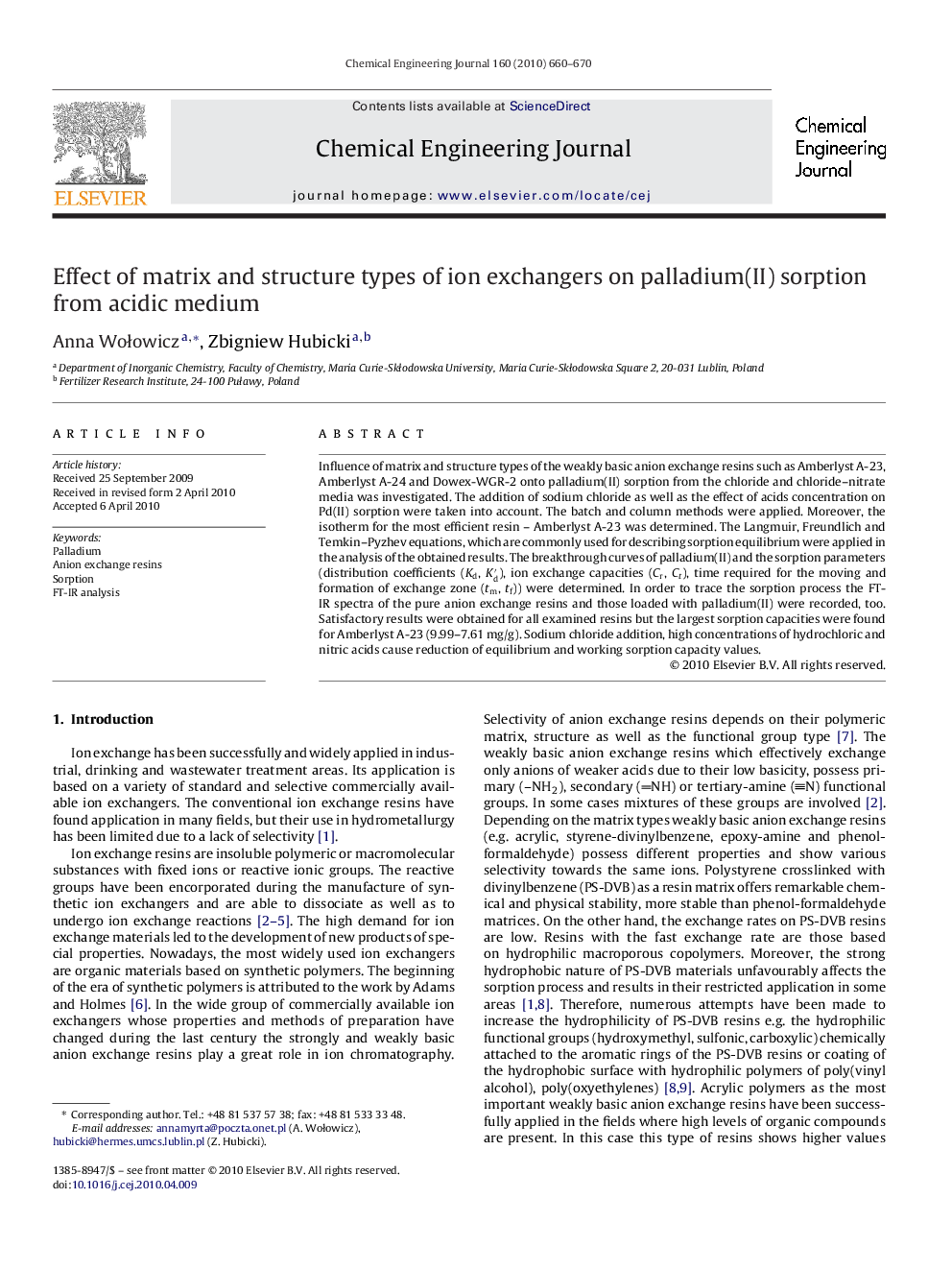| Article ID | Journal | Published Year | Pages | File Type |
|---|---|---|---|---|
| 151538 | Chemical Engineering Journal | 2010 | 11 Pages |
Influence of matrix and structure types of the weakly basic anion exchange resins such as Amberlyst A-23, Amberlyst A-24 and Dowex-WGR-2 onto palladium(II) sorption from the chloride and chloride–nitrate media was investigated. The addition of sodium chloride as well as the effect of acids concentration on Pd(II) sorption were taken into account. The batch and column methods were applied. Moreover, the isotherm for the most efficient resin – Amberlyst A-23 was determined. The Langmuir, Freundlich and Temkin–Pyzhev equations, which are commonly used for describing sorption equilibrium were applied in the analysis of the obtained results. The breakthrough curves of palladium(II) and the sorption parameters (distribution coefficients (Kd, K′dK′d), ion exchange capacities (Cr, Ct), time required for the moving and formation of exchange zone (tm, tf)) were determined. In order to trace the sorption process the FT-IR spectra of the pure anion exchange resins and those loaded with palladium(II) were recorded, too. Satisfactory results were obtained for all examined resins but the largest sorption capacities were found for Amberlyst A-23 (9.99–7.61 mg/g). Sodium chloride addition, high concentrations of hydrochloric and nitric acids cause reduction of equilibrium and working sorption capacity values.
